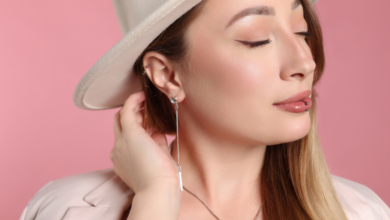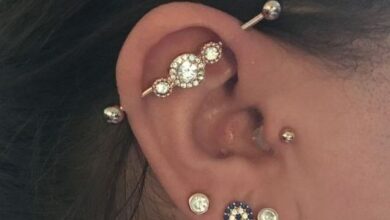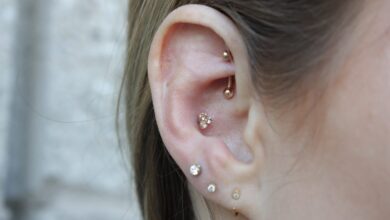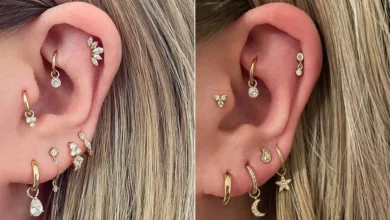
In the world of nose piercings, the decision between studs and rings can be a tough one. With so many styles to choose from, it’s important to consider factors like comfort, maintenance, and personal style. In this exclusive article from stylish.ae, we’ll help you navigate the options and make an informed decision that suits your unique tastes. Whether you’re a seasoned nose piercing enthusiast or considering your first piercing, we’ve got you covered with expert advice and insights. Get ready to rock your nose piercing with confidence and style!
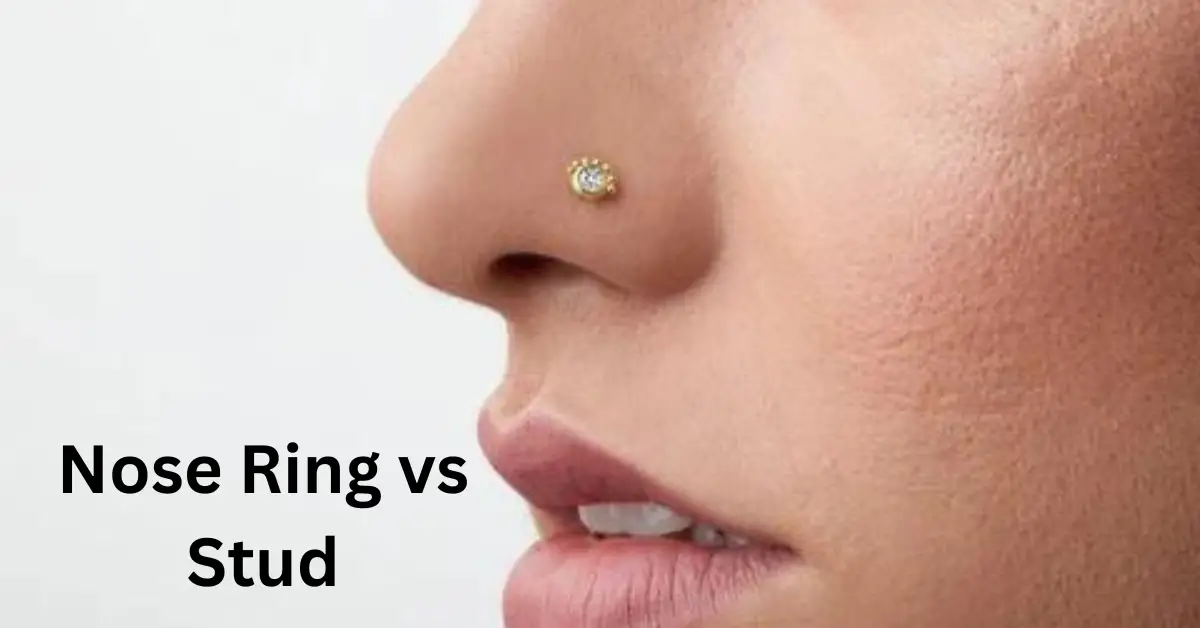
Choosing the Right Nose Jewelry
When it comes to choosing the right nose jewelry, there are several factors you should consider. Personal style and preference, comfort and practicality, the healing process, as well as cultural and social factors, all play a significant role in making the perfect choice.
Consider Personal Style and Preference
Your personal style and preference should be the starting point in choosing nose jewelry. Whether you prefer a minimalist and understated look or something bold and eye-catching, there are plenty of options to suit every taste. Consider the overall aesthetic you want to achieve and choose jewelry that reflects your unique personality.
Think About Comfort and Practicality
Comfort and practicality are crucial factors to consider when choosing nose jewelry. You want to ensure that you are comfortable wearing your jewelry for long periods of time, especially if you plan on keeping your piercing for an extended period. Opt for jewelry that is lightweight and fits securely to avoid any discomfort or irritation.
Consider the Healing Process
During the healing process, it’s essential to choose jewelry that won’t hinder or interfere with the body’s natural healing process. Material and design play a significant role in this aspect. Make sure to select hypoallergenic materials such as titanium or surgical steel to minimize the risk of irritation or infection.
Consider Cultural and Social Factors
Cultural and social factors may also influence your choice of nose jewelry. Certain cultures have specific traditions or meanings associated with nose piercings, and opting for jewelry that aligns with these traditions can be a powerful way to express your identity. Additionally, consider your workplace or social environment and choose jewelry that is appropriate for the setting.
Studs for Nose Piercings
Studs are a popular choice for nose piercings due to their simplicity and versatility. They come in various types, including screws, L-shapes, and straight pins.
Different Types of Studs
There are different types of studs available for nose piercings, each with its own unique design and fastening mechanism. Screw studs, as the name suggests, are twisted into place and provide a secure fit. L-shape studs have a bent end that sits inside the nose, holding the jewelry in place. Straight pin studs slide easily through the piercing and are simple to clean and maintain.
The Classic and Timeless Look
Studs offer a classic and timeless look that can complement any style or outfit. Whether you prefer a simple and understated look or want to make a bold statement, studs can be customized to match your desired aesthetic.
Ease of Cleaning and Maintenance
One of the advantages of studs is their ease of cleaning and maintenance. Unlike rings, which may require more intricate cleaning techniques, studs can be easily cleaned with a saline solution or an alcohol-free cleanser. This makes them a convenient choice for those who prefer a low-maintenance option.
Minimizing Risk of Snagging
Studs minimize the risk of snagging on clothing or other objects. The flat surface of a stud lies flush against the nose, reducing the chance of the jewelry getting caught and potentially causing discomfort or damage. If you lead an active lifestyle or work in an environment where your jewelry may be at risk of getting caught, studs are a safer choice.
Rings for Nose Piercings
Rings are another popular option for nose piercings and offer a more edgy and versatile look. They come in various types, such as hoops, captive bead rings, and seamless rings.
Different Types of Rings
There are different types of rings available for nose piercings, each with its own unique design and fastening mechanism. Hoops, also known as circular barbells, are a popular choice for a more edgy and alternative look. Captive bead rings feature a small bead that is held in place by the ring itself, while seamless rings offer a continuous, uninterrupted look.
The Versatile and Edgy Look
Rings add a touch of versatility and edginess to your nose piercing. Whether you opt for a simple hoop or a more intricate design, rings can instantly elevate your overall look and make a statement. They are a great choice for those who want to experiment with different styles and change up their look regularly.
Potential Comfort and Fit Issues
While rings offer a unique aesthetic, they may come with potential comfort and fit issues. Unlike studs, which lie flat against the nose, rings can move and rotate more easily. This movement may cause some discomfort, especially during the healing process. It’s essential to find the right size and shape of the ring to ensure a comfortable fit.
Adjusting to Activities and Lifestyle
If you lead an active lifestyle or participate in activities where your nose jewelry may be at risk of getting caught, rings may not be the most practical choice. The circular shape of rings increases the likelihood of snagging, especially during activities such as sports or physical labor. Consider your lifestyle and choose jewelry that can withstand your daily activities.
Considerations for Piercing Placement
The placement of your nose piercing plays a crucial role in determining the type of jewelry that will best suit you. Different placements, such as nostril, septum, and bridge piercings, each have their own unique considerations.
Nostril Placement
Nostril piercings are the most common type of nose piercing and offer a wide range of jewelry options. When choosing jewelry for a nostril piercing, consider the size and shape of your nostril, as well as the angle of the piercing. Opt for jewelry that fits securely and flatters your facial features.
Septum Placement
Septum piercings are placed through the middle of the nose, between the nostrils. The jewelry for septum piercings typically includes circular barbells, captive bead rings, or clickers. Take into account the size of your septum and choose jewelry that fits comfortably and does not cause any irritation.
Bridge Placement
Bridge piercings, also known as Erl or Earl piercings, are placed horizontally on the bridge of the nose. Due to the unique placement, choosing jewelry for this type of piercing can be more challenging. Surface barbells or curved barbells are often used for bridge piercings, but it’s essential to consult with a professional piercer to find the best jewelry option for you.
Choosing Complementary Jewelry
Regardless of the placement, it’s important to choose jewelry that complements your facial features and enhances your overall look. Consider the shape of your face, your skin tone, and your personal style to find the perfect jewelry that accentuates your natural beauty.

Nose Piercing Aftercare
Proper aftercare is crucial for the healing and well-being of your newly pierced nose. Following a strict cleaning routine, avoiding irritants, and addressing any swelling or discomfort are all important aspects of nose piercing aftercare.
Cleaning Routine
Keeping your nose piercing clean is essential to prevent infections and promote healing. Use a saline solution or an alcohol-free cleanser to gently clean the area around the piercing twice a day. Avoid using harsh soaps or cleansers that may cause irritation.
Avoiding Irritants
During the healing process, it’s important to avoid irritants that may prolong the healing time or cause complications. Avoid swimming in pools or hot tubs, as chlorine and other chemicals can irritate the piercing. Additionally, avoid touching the piercing with dirty hands or exposing it to harsh cosmetics or beauty products.
Handling Swelling and Discomfort
It is common for your nose piercing to experience some swelling and discomfort, especially in the initial stages of healing. Applying a cold compress or taking over-the-counter anti-inflammatory medication can help to alleviate these symptoms. If the swelling or discomfort persists or worsens, consult with a professional piercer or a healthcare provider.
Common Healing Issues and Solutions
During the healing process, you may encounter common issues such as irritation, redness, or occasional bumps around the piercing. These can be addressed by consistent cleaning, avoiding excessive touching, and wearing jewelry made from hypoallergenic materials. In case of persistent or severe issues, seek medical advice to prevent further complications.
Changing Nose Jewelry
Once your nose piercing is fully healed, you may want to change your jewelry to explore different styles or match your outfits. However, it’s important to know when and how to change your nose jewelry safely and effectively.
When and How to Change Jewelry
It is recommended to wait until your nose piercing is fully healed before changing your jewelry. This usually takes around 6-8 weeks, but it may vary depending on individual healing times. When changing your jewelry, make sure to do it in a clean environment and with clean hands to minimize the risk of infection.
Different Types of Jewelry Fasteners
Different types of fasteners are used to secure nose jewelry in place. These include screw-ons, push-fit, and clip-on fasteners. Choose the fastening mechanism that you find most comfortable and easy to manage, considering your dexterity and preferences.
Tips for Easy and Safe Change
To make changing your nose jewelry easier and safer, you can use lubricant to help the jewelry slide smoothly through the piercing. Additionally, make sure to choose jewelry that matches the gauge and size of your original piercing to ensure a proper fit.
Seeking Professional Help if Necessary
If you are unsure of how to change your nose jewelry or encounter any difficulties, it’s always best to seek professional help. A professional piercer can guide you through the process and ensure that your jewelry is changed safely and correctly.
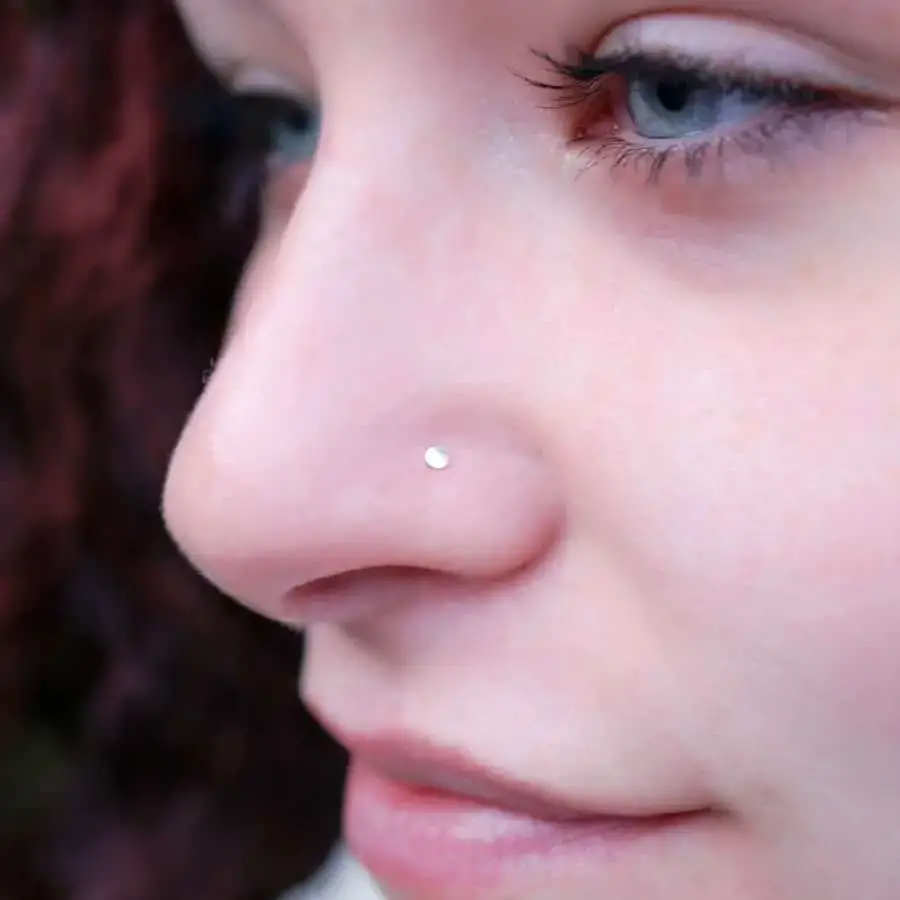
Styling Nose Jewelry
Nose jewelry can be a fun and stylish accessory that enhances your overall look. With various styles and designs available, you can effortlessly incorporate nose jewelry into your everyday outfits and explore creative and unique styles.
Choosing Jewelry to Match Outfits
When styling your nose jewelry, consider the colors, patterns, and overall aesthetic of your outfits. You can opt for jewelry that complements or contrasts with your clothing to create a cohesive and visually appealing look. Whether you prefer a subtle and understated look or a bold statement piece, there’s a wide range of nose jewelry options to suit your style.
Mixing and Matching with Other Jewelry
Don’t be afraid to mix and match your nose jewelry with other pieces of jewelry. Experiment with layering necklaces, stacking rings, or pairing nose jewelry with earrings to create a cohesive and personalized look. Mixing metals, textures, and styles can add a unique flair to your overall ensemble.
Considering Occasions and Formality
Consider the occasion and level of formality when styling your nose jewelry. For more formal events or professional settings, opt for understated and elegant jewelry that complements your outfit without overpowering it. On the other hand, for casual and social occasions, feel free to express your personality and creativity by choosing bold and eye-catching nose jewelry.
Exploring Creative and Unique Styles
Nose jewelry offers endless possibilities for expressing your creativity and individuality. Explore unique and avant-garde designs, such as asymmetrical earrings, septum clickers with intricate patterns, or custom-made studs. Don’t be afraid to step out of your comfort zone and try something new and unexpected.
Healing and Rejection Issues
While nose piercings are generally safe, there can be potential healing and rejection issues that may arise. Being aware of the signs of healing, recognizing rejection, and knowing how to deal with infections and allergies are important aspects of ensuring a successful nose piercing experience.
Signs of Healing Process
The healing process of a nose piercing typically involves some redness, tenderness, and secretion of a clear or white fluid. These symptoms should gradually diminish over time as the piercing heals. Look for signs of the piercing closing up, such as increased pain, discharge, or the formation of a hard lump, which may indicate an infection or rejection.
Recognizing Rejection
Rejection occurs when the body rejects the foreign object (jewelry) inserted into the piercing. Signs of rejection include the jewelry appearing to move closer to the surface, thinning of the skin around the jewelry, or the jewelry becoming visible beneath the skin. If you suspect rejection, seek medical advice promptly.
Dealing with Infections and Allergies
Infections and allergies can occur with nose piercings, but they can be managed with proper care and attention. If you notice symptoms such as excessive redness, swelling, pus, or intense pain, it may indicate an infection. In such cases, it’s important to seek medical advice and follow the recommended treatment.
Seeking Medical Advice When Necessary
If you experience any persistent issues, severe pain, or other concerning symptoms related to your nose piercing, seeking medical advice is crucial. A healthcare professional will be able to assess the situation, provide appropriate treatment, and help ensure the well-being of your piercing.
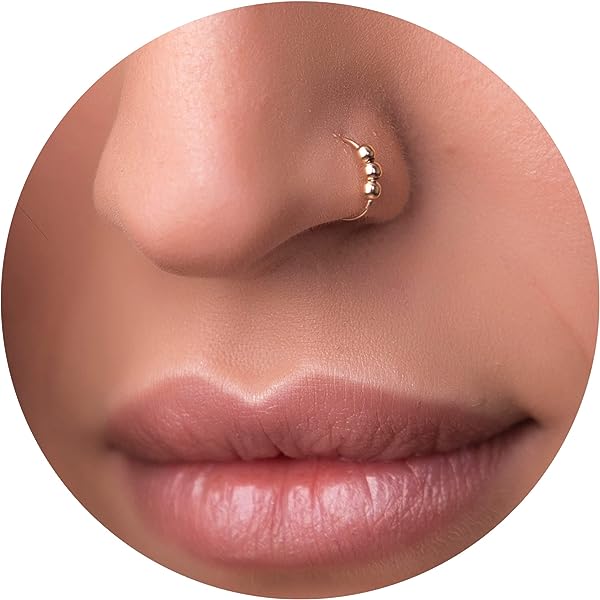
Tips for Pain Management
While pain is subjective and experiences vary, there are various techniques and strategies you can use to manage pain during and after the nose piercing process.
Using Numbing Creams or Gels
Applying a numbing cream or gel to the area before the piercing can help alleviate the pain. However, it’s important to consult with a professional piercer or a healthcare provider before using any numbing products to ensure their safety and effectiveness.
Pain Control Techniques
Deep breathing exercises, mindfulness techniques, and distracting yourself with music or conversation can help you manage pain during the piercing process. It’s also helpful to remind yourself that the initial pain is temporary and that you will soon have a beautiful nose piercing.
Following Professional Piercing Guidelines
Following professional piercing guidelines is crucial for minimizing pain and ensuring a successful piercing experience. Choose a reputable piercer who follows industry standards and uses sterile equipment. Additionally, make sure to adhere to the aftercare instructions provided by your piercer to promote proper healing and minimize discomfort.
Managing Pain during the Healing Process
During the healing process, it’s normal to experience some discomfort or sensitivity around the piercing. Over-the-counter pain relievers, such as ibuprofen or acetaminophen, can help manage any pain or inflammation. Applying a cold compress or using a sea salt soak can also provide relief.
Nose Piercing Dos and Don’ts
To ensure a successful nose piercing experience, it’s important to follow certain dos and don’ts. Following proper cleaning and care, researching and choosing piercers wisely, and avoiding common mistakes are all essential aspects of nose piercing dos and don’ts.
Dos: Proper Cleaning and Care
Do clean your nose piercing regularly and properly using a saline solution or an alcohol-free cleanser. Stick to the recommended cleaning routine provided by your piercer and avoid using harsh soaps or cleansers that may irritate the piercing. Proper cleaning and care are key to preventing infections and promoting healing.
Dos: Researching and Choosing Piercers Wisely
Do your research and choose a professional and reputable piercer for your nose piercing. Look for certifications, reviews, and recommendations to ensure that you are in good hands. A professional piercer will provide a safe and hygienic piercing process and offer guidance on proper aftercare.
Don’ts: Removing Jewelry too Early
Don’t remove your nose jewelry too early, especially during the healing process. Removing the jewelry too soon can disrupt the healing process and may cause the piercing to close up. It’s important to consult with your piercer before considering jewelry removal or changing.
Don’ts: Touching or Twisting the Jewelry
Avoid touching or twisting your nose jewelry unnecessarily. Constantly touching the piercing with dirty hands can introduce bacteria and increase the risk of infection. Twisting the jewelry unnecessarily can also cause irritation or damage to the piercing. Be gentle and allow the piercing to heal naturally.
Navigating the world of nose piercings can be exciting and daunting at the same time. By considering personal style and preference, comfort and practicality, the healing process, and cultural and social factors, you can make an informed decision when choosing the right nose jewelry. Whether you opt for studs or rings, take into account different types, styles, and placement options to find the perfect jewelry for you. With proper aftercare, pain management techniques, and adherence to dos and don’ts, your nose piercing journey can be a stylish and enjoyable experience.
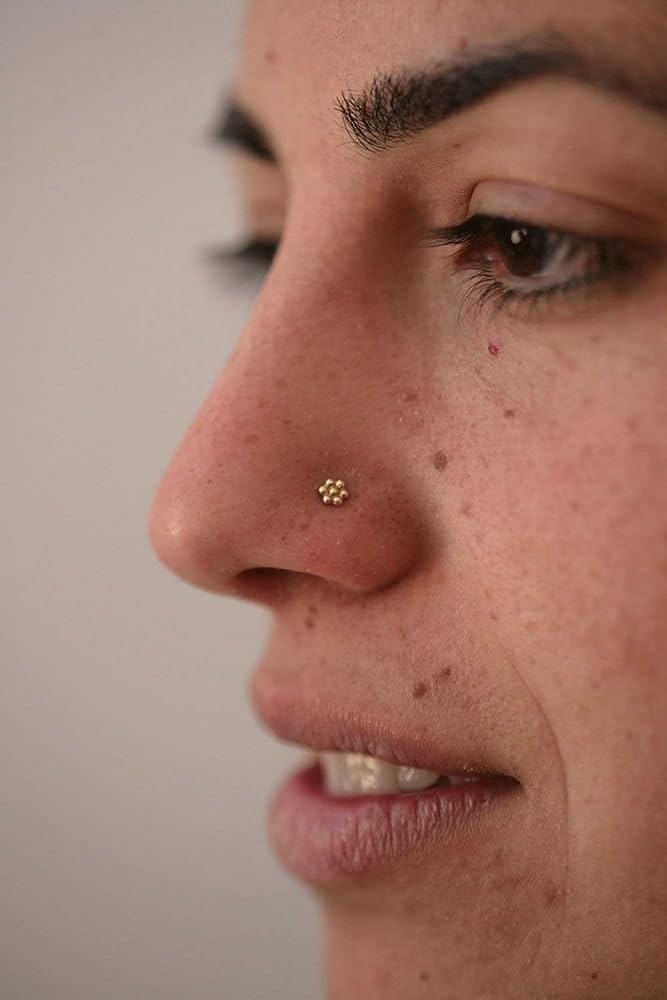
Variations and customization options for industrial piercings(Opens in a new browser tab)
Different Types of Jewelry Options for Nose Piercings(Opens in a new browser tab)
The 16 Types of Ear Piercings: Choosing Based on Pain and Placement(Opens in a new browser tab)

